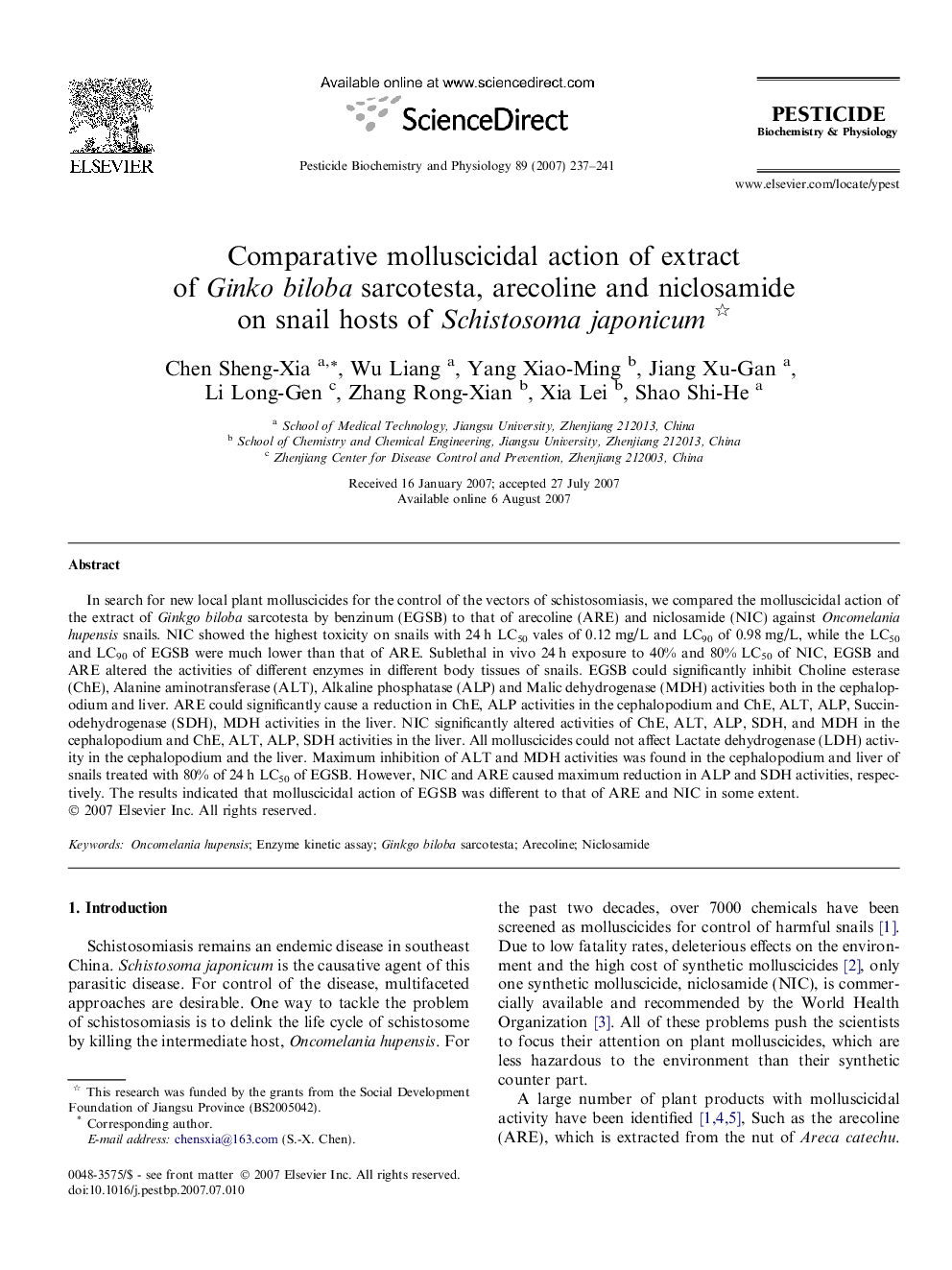| Article ID | Journal | Published Year | Pages | File Type |
|---|---|---|---|---|
| 2010157 | Pesticide Biochemistry and Physiology | 2007 | 5 Pages |
In search for new local plant molluscicides for the control of the vectors of schistosomiasis, we compared the molluscicidal action of the extract of Ginkgo biloba sarcotesta by benzinum (EGSB) to that of arecoline (ARE) and niclosamide (NIC) against Oncomelania hupensis snails. NIC showed the highest toxicity on snails with 24 h LC50 vales of 0.12 mg/L and LC90 of 0.98 mg/L, while the LC50 and LC90 of EGSB were much lower than that of ARE. Sublethal in vivo 24 h exposure to 40% and 80% LC50 of NIC, EGSB and ARE altered the activities of different enzymes in different body tissues of snails. EGSB could significantly inhibit Choline esterase (ChE), Alanine aminotransferase (ALT), Alkaline phosphatase (ALP) and Malic dehydrogenase (MDH) activities both in the cephalopodium and liver. ARE could significantly cause a reduction in ChE, ALP activities in the cephalopodium and ChE, ALT, ALP, Succinodehydrogenase (SDH), MDH activities in the liver. NIC significantly altered activities of ChE, ALT, ALP, SDH, and MDH in the cephalopodium and ChE, ALT, ALP, SDH activities in the liver. All molluscicides could not affect Lactate dehydrogenase (LDH) activity in the cephalopodium and the liver. Maximum inhibition of ALT and MDH activities was found in the cephalopodium and liver of snails treated with 80% of 24 h LC50 of EGSB. However, NIC and ARE caused maximum reduction in ALP and SDH activities, respectively. The results indicated that molluscicidal action of EGSB was different to that of ARE and NIC in some extent.
